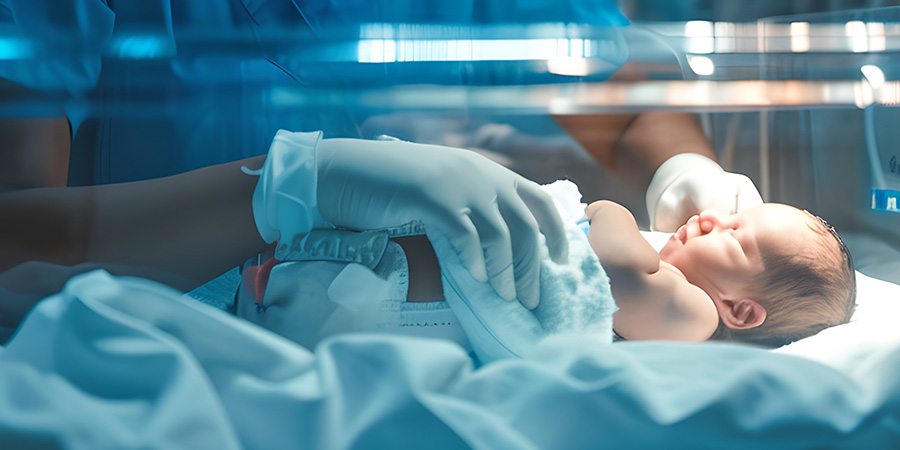Health care professionals and Emergency Medical Services providers are partners in care. It takes both of these teams working together to ensure the best possible outcomes for patients. Passionate about this mission, Dr. Franco-Fuenmavor serves as the co-director of the UTMB Pediatrics Preemie Clinic.
To help ensure some of the most fragile patients-neonates--are handled with care, here are five tips from UTMB assistant professor of Pediatrics Dr. Maria Franco-Fuenmayor on how to transport them safely and effectively.
- Ensure that the baby is properly restrained regardless of illness severity. Proper positioning during transport is important for everyone’s safety and to render treatment most effectively.
- Know how to position equipment for vital sign monitoring. For example, pulse oximetry can be wrapped around the wrist or on the foot.
- Keep an eye on the temperature and glucose; neonates are predisposed to hypothermia and hypoglycemia. A hypothermic baby can get themselves in trouble quickly, including getting hypoglycemic. Checking glucose can help identify potential causes and ensure prompt treatment.
- Be prepared to manage their airway. Respiratory distress can lead to bradycardia and can be followed by apnea. Neonates are obligate nose breathers and suctioning can be helpful. Following the Neonatal Resuscitation Program (NRP) considers the differing physiology in the neonatal period.
- Babies can have notoriously difficult IV access. If you’re unable to place an IV, intraosseous (IO) can be considered based on availability of equipment, training, and experience.
Have something you’d like health care teams to know? Email ems@utmb.edu.
References
- Aziz K, Lee HC, Escobedo MB, Hoover AV, Kamath-Rayne BD, Kapadia VS, Magid DJ, Niermeyer S, Schmölzer GM, Szyld E, Weiner GM, Wyckoff MH, Yamada NK, Zaichkin J. Part 5: neonatal resuscitation: 2020 American Heart Association Guidelines for Cardiopulmonary Resuscitation and Emergency Cardiovascular Care. Circulation. 2020;142(suppl 2):S524–S550.
- Duby R, Hansen M, Meckler G, Skarica B, Lambert W, Guise JM. Safety Events in High Risk Prehospital Neonatal Calls. Prehosp Emerg Care. 2018 Jan-Feb;22(1):34-40.
- Insoft, R. M., Schwartz, H. P., Romito, J., & Alexander, S. N. (2016). Guidelines for air and ground transport of neonatal and pediatric patients. American Academy of Pediatrics.
- Lyng J, Adelgais K, Alter R, et al. (2021): Recommended Essential Equipment for Basic Life Support and Advanced Life Support Ground Ambulances 2020: A Joint Position Statement, Prehospital Emergency Care, DOI: 10.1080/10903127.2021.1886382.
- The National Association of State Emergency Medical Services Officials. (2022, March). Clinical & Evidence-Based Guidelines - National Association of State Emergency Medical Services Officials. Accessed at: https://nasemso.org/content.aspx?page_id=22&club_id=157064&module_id=701974
